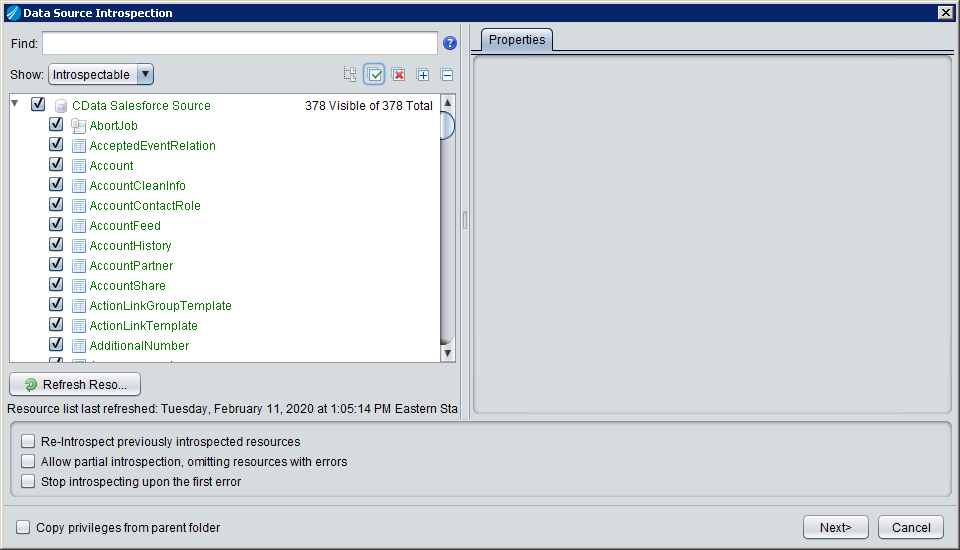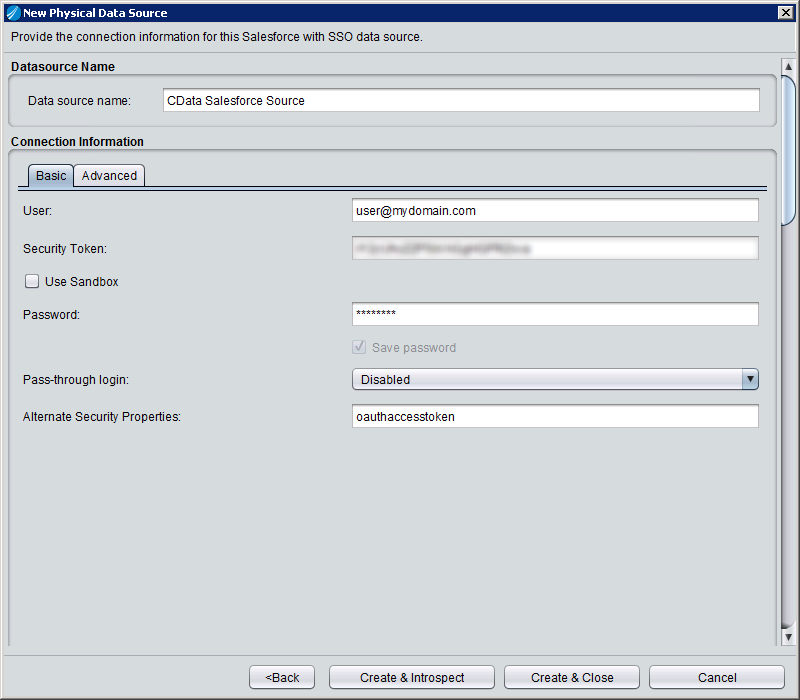Discover how a bimodal integration strategy can address the major data management challenges facing your organization today.
Get the Report →Access Live Paylocity Data in TIBCO Data Virtualization
Use the CData TIBCO DV Adapter for Paylocity to create a Paylocity data source in TIBCO Data Virtualization Studio and gain access to live Paylocity data from your TDV Server.
TIBCO Data Virtualization (TDV) is an enterprise data virtualization solution that orchestrates access to multiple and varied data sources. When paired with the CData TIBCO DV Adapter for Paylocity, you get federated access to live Paylocity data directly within TIBCO Data Virtualization. This article walks through deploying an adapter and creating a new data source based on Paylocity.
With built-in optimized data processing, the CData TIBCO DV Adapter offers unmatched performance for interacting with live Paylocity data. When you issue complex SQL queries to Paylocity, the adapter pushes supported SQL operations, like filters and aggregations, directly to Paylocity. Its built-in dynamic metadata querying allows you to work with and analyze Paylocity data using native data types.
Deploy the Paylocity TIBCO DV Adapter
In a console, navigate to the bin folder in the TDV Server installation directory. If there is a current version of the adapter installed, you will need to undeploy it.
.\server_util.bat -server localhost -user admin -password ******** -undeploy -version 1 -name Paylocity
Extract the CData TIBCO DV Adapter to a local folder and deploy the JAR file (tdv.paylocity.jar) to the server from the extract location.
.\server_util.bat -server localhost -user admin -password ******** -deploy -package /PATH/TO/tdv.paylocity.jar
You may need to restart the server to ensure the new JAR file is loaded properly, which can be accomplished by running the composite.bat script located at: C:\Program Files\TIBCO\TDV Server <version>\bin. Note that reauthenticating to the TDV Studio is required after restarting the server.
Sample Restart Call
.\composite.bat monitor restart
Authenticate with Paylocity Using OAuth
Since Paylocity authenticates using the OAuth protocol and TDV Studio does not support browser-based authentication internally, you will need to create and run a simple Java application to retrieve the OAuth tokens. Once retrieved, the tokens are used to connect to Paylocity directly from the adapter.
The following code sample shows how to authenticate with Paylocity. You will simply need to execute the Java application with the tdv.paylocity.jar file in the class path.
PaylocityOAuth oauth = new PaylocityOAuth();
oauth.generateOAuthSettingsFile("InitiateOAuth=GETANDREFRESH;" +
"OAuthClientID=YourClientId;OAuthClientSecret=YourClientSecret;RSAPublicKey=YourRSAPubKey;Key=YourKey;IV=YourIV;" +
"OAuthSettingsLocation=C:\paylocity\OAuthSettings.txt;");
Once you deploy the adapter and authenticate, you can create a new data source for Paylocity in TDV Studio.
Create a Paylocity Data Source in TDV Studio
With the CData TIBCO DV Adapter for Paylocity, you can easily create a data source for Paylocity and introspect the data source to add resources to TDV.
Create the Data Source
- Right-click on the folder you wish to add the data source to and select New -> New Data Source.
- Scroll until you find the adapter (e.g. Paylocity) and click Next.
- Name the data source (e.g. CData Paylocity Source).
Fill in the required connection properties.
Set the following to establish a connection to Paylocity:
- RSAPublicKey: Set this to the RSA Key associated with your Paylocity, if the RSA Encryption is enabled in the Paylocity account.
This property is required for executing Insert and Update statements, and it is not required if the feature is disabled.
- UseSandbox: Set to true if you are using sandbox account.
- CustomFieldsCategory: Set this to the Customfields category. This is required when IncludeCustomFields is set to true. The default value for this property is PayrollAndHR.
- Key: The AES symmetric key(base 64 encoded) encrypted with the Paylocity Public Key. It is the key used to encrypt the content.
Paylocity will decrypt the AES key using RSA decryption.
It is an optional property if the IV value not provided, The driver will generate a key internally. - IV: The AES IV (base 64 encoded) used when encrypting the content. It is an optional property if the Key value not provided, The driver will generate an IV internally.
Connect Using OAuth Authentication
You must use OAuth to authenticate with Paylocity. OAuth requires the authenticating user to interact with Paylocity using the browser. For more information, refer to the OAuth section in the Help documentation.
The Pay Entry API
The Pay Entry API is completely separate from the rest of the Paylocity API. It uses a separate Client ID and Secret, and must be explicitly requested from Paylocity for access to be granted for an account. The Pay Entry API allows you to automatically submit payroll information for individual employees, and little else. Due to the extremely limited nature of what is offered by the Pay Entry API, we have elected not to give it a separate schema, but it may be enabled via the UsePayEntryAPI connection property.
Please be aware that when setting UsePayEntryAPI to true, you may only use the CreatePayEntryImportBatch & MergePayEntryImportBatchgtable stored procedures, the InputTimeEntry table, and the OAuth stored procedures. Attempts to use other features of the product will result in an error. You must also store your OAuthAccessToken separately, which often means setting a different OAuthSettingsLocation when using this connection property.
NOTE: Set the OAuthSettingsLocation property in the DV Adapter to the same value you used when performing the OAuth authentication (see above).
![Filling in Connection Information (Salesforce is shown.)]()
- RSAPublicKey: Set this to the RSA Key associated with your Paylocity, if the RSA Encryption is enabled in the Paylocity account.
- Click Create & Close.
Introspect the Data Source
Once the data source is created, you can introspect the data source by right-clicking and selecting Open. In the dashboard, click Add/Remove Resources and select the Tables, Views, and Stored Procedures to include as part of the data source. Click Next and Finish to add the selected Paylocity tables, views, and stored procedures as resources.

After creating and introspecting the data source, you are ready to work with Paylocity data in TIBCO Data Virtualization just like you would any other relational data source. You can create views, query using SQL, publish the data source, and more.







